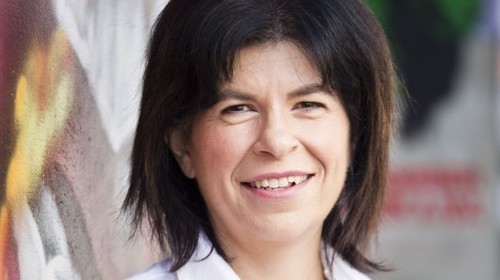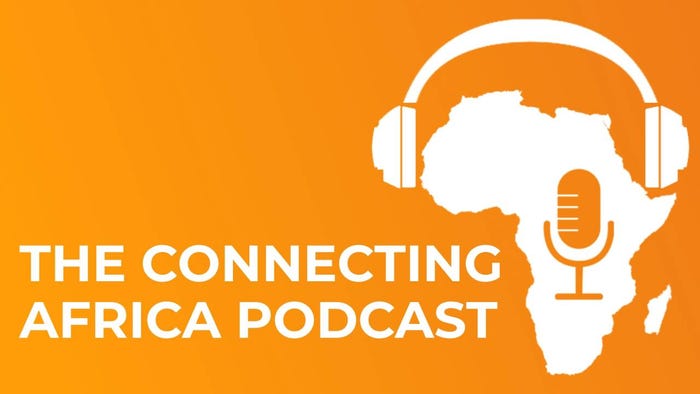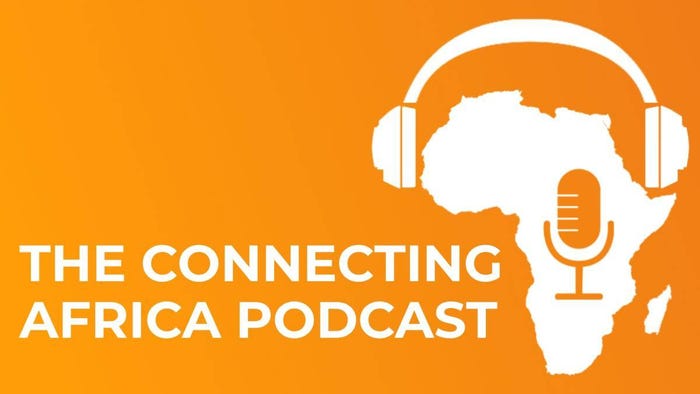Africa's Entertainment & Media Industry Enters New Wave of Convergence
By 2022, total entertainment and media (E&M) revenues in South Africa is expected to reach R177.2 billion, up from R129.2 billion in 2017.

PRESS RELEASE -- JOHANNESBURG, South Africa -- Africa’s entertainment and media industry has entered a dynamic new phase - a third wave of convergence. The borders that once separated the entertainment and media (E&M), technology and telecommunications industries are blurring in the battle for the attention of the consumer in a world that is rapidly digitising. As the mobile device cements itself as the pre-eminent source of the E&M experience, the most disruptive, forward-thinking companies are striving to create an integrated ecosystem suited to this consumer-driven dynamic. This is according to PwC’s (www.PwC.com) ‘Entertainment and media outlook: 2018 – 2022: An African perspective’ released today.
By 2022, total E&M revenue in South Africa is expected to reach R177.2 billion, up from R129.2 billion in 2017. Internet (access and advertising) is expected to grow at a compound annual growth rate (CAGR) of 11.3% over the forecast period to reach R91.2 billion, up from R53.4 billion in 2017. Overall E&M growth will be less reliant on Internet access revenue as organic growth opportunities in Internet connections start fading towards the end of the forecast period. Internet advertising will greatly exceed TV advertising in terms of growth, leading the way with a 13% CAGR over the forecast period to reach R9.4 billion and overtake TV advertising spend in 2022.
The Outlook is a comprehensive source of analyses and five-year forecasts of consumer and advertising spending across five countries (South Africa, Nigeria, Kenya, Ghana and Tanzania) and 14 segments: Internet, data consumption, television, cinema, video games, e-sports, virtual reality, newspaper publishing, magazine publishing, book publishing, business-to-business (b2b), music, out-of-home (OOH) and radio.

Vicki Myburgh, Entertainment &Media Industry Leader for PwC South Africa.
Vicki Myburgh, Entertainment and Media Leader for PwC Southern Africa, says: “It’s clear we’re in a rapidly evolving media ecosystem that’s experiencing Convergence 3.0. In Convergence 3.0, the dynamics of competition are evolving while a cohort of ever-expanding super competitors and more focussed players strive to build relevance at the right scale. And business models are being reinvented so all players can tap into new revenue streams, by, for example, targeting fans and connecting more effectively with customers to develop a membership mind-set.
“The pace of change isn’t going to let up anytime soon. New and emerging technologies such as artificial intelligence and augmented reality will continue to redefine the battleground. In an era when faith in many industries is at a historically low ebb and regulators are targeting media businesses’ use of data, the ability to build and sustain consumer trust is becoming a vital differentiator.”
South Africa’s E&M industry faced a challenging year in 2017 amidst economic and socio-political uncertainty. Total E&M revenue rose at a comparatively low rate of 6.8% year-on-year to R129.2 billion. A bounce-back in 2018 sees an anticipated 7.6% year-on-year growth, while the CAGR to 2022 is forecast at 6.5%.
South Africa will see a strong CAGR of 7.6% for consumer revenue to 2022, moving from R93.9 billion in 2017 to R135.7 billion in 2022. Beyond revenue from the Internet segment (buoyed by apps revenue) there are many success stories, most notably that of video games, which will surpass books, magazines and B2B to become the third-highest contributing consumer segment.
There is a striking difference in growth between digital and nondigital revenue, which have CAGRs of 11.4% and 1.8% respectively. Put another way, digital revenue will add R41.3 billion and nondigital revenue R6.7 billion in absolute terms to 2022. The nondigital elements of five different segments – books, magazines, newspapers, OOH and video games – will all decline to 2022.
Within this overall increase, the fastest revenue growth will be in the digitally driven segments. Virtual reality will lead the way, albeit from a low base, at a five-year CAGR of 55% to reach R671 billion in 2022, from R75 billion in 2017. “The exceptional growth in VR reflects the excitement in this space. VR devices and experiences are in the early stages of being accepted by the mainstream, as VR now emerges as a viable long-term platform for unique, immersive experiences, attracting major investment from media and technology companies eager to seize a share of this fast-growing market,” Myburgh adds.
After a breakthrough year, South Africa’s total e-sports revenue is forecast to rise from R29 million in 2017 to R104 million in 2022, a CAGR of 29%. A host of high profile events in 2017 helped to propel e-sport further towards the mainstream, and a number of similar events have been and are being held this year.
A booming social/casual sector is driving strong growth in the video games segment. Total revenue is forecast to rise from R3.1 billion in 2017 to R6.2 billion in 2022, a CAGR of 15%. TV and video will continue to be a major driver of consumer spend. Following growth at 4.8% CAGR over the forecast period, the total TV market will be worth R40.8 billion by 2022.
The shift from physical to digital media has been one of the core drivers of the global and local E&M market for many years. But different media segments have experienced strongly contrasting patterns of digitisation. In some cases, consumers have been quick to drop physical formats and embrace digital alternatives at the first opportunity.
Although the growth rate for physical books is moderate, it is notable that books are performing far better than any other non-digital sector. “Permanency and collectability may be the reason for this. Books are seen as collectibles often owned and displayed for many years, making the loss of their physical presence more significant,” explains Myburgh. Although books currently seem to have the best prospects of any physical media format, they are, like every other media segment, just one disruptive digital competitor away from major upheaval.
Newspapers and magazines will see revenues decline over the next five years. In 2017, total newspaper revenue fell by – 2.9% to R8.6 billion. The forecast for the years ahead is for decline at -4% CAGR. By 2022, South African total newspaper revenue is expected to drop to R7 billion.
Despite 24/7 access to media and entertainment, the appeal of shared, live experiences still attracts audiences. Music events still draw large crowds, with ticket sales set to see an 8.0% CAGR to 2022, helped by major tours from popular crowd-pulling acts in 2018.
Recovering admissions and rising ticket prices together with improved offerings will see box office revenue deliver modest growth at a 3.5% CAGR through 2022.South African audiences are prepared to pay a premium to watch big-budget films with surround sound, vibrating seats, temperature change, strobe lights and so on. Radio continues to have a solid listener base in South Africa, and a weekly reach of 91%. Radio revenue is projected to rise 3.9% CAGR over the forecast period to surpass the R5 billion mark in 2022.
Chat apps and social platforms have become an increasingly important part of day-to-day life for consumers, both in South Africa and worldwide. As usage and entertainment rise, key players from across the E&M industry have teamed up with these platforms, growing them into ‘one-stop shops’ for consumer needs.
The report shows that advertising in the E&M industry was mostly affected by South Africa’s economic environment, with cautious growth of just 1.9% year on year. An improvement is expected to 2022, with a 3.3% CAGR bringing total advertising revenue to R41.5 billion, from R35.3 billion in 2017. New technologies and devices like artificial intelligence (AI), virtual and augmented reality, voice-based smart home devices and virtual assistants look set to drive innovation in online advertising on a global scale in the coming years.
Nigeria
Nigeria saw a huge 25.5% rise in E&M revenue in 2017 to US$3.8 billion, although US$605 million of this US$764 million rise was attributable to Internet access. A 21.5% CAGR rate is anticipated to 2022, with revenue reaching US$9.9 billion in that year. Again, Internet access revenue will account for 89.6% of this absolute growth.
Kenya
Kenya’s E&M industry saw 17% year-on-year growth in 2017, again propelled by growth in the Internet sector. An 11.6% CAGR will take the country to US$2.9 billion in 2022, from US$1.7 billion in 2017. Outside of the Internet space, TV and video revenue dwarfs the other segments.
Ghana
Ghana’s E&M industry has more than tripled in value since 2013. Total revenue reached US$752 million in 2017. It is forecast to surpass US$1 billion in 2019 and to total US$1.5 billion in 2022, increasing at a 14.2% CAGR. As with Nigeria and Kenya, Internet access spend accounts for much of this revenue and growth. Ghana is in a strong position for further E&M growth as revenue gains critical mass over the next five years.
Tanzania
Total E&M revenue in Tanzania stood at US$496 million in 2017, having risen 28.2% year on year. Continued momentum at an 18.3% CAGR will see revenue reach US$1.2 billion in 2022, 2.3 times the size of the market in 2017. Tanzania’s E&M revenue make-up is ostensibly similar to that of Ghana, although here Internet revenue takes a slightly less dominant position.
Between them, the five countries considered in the Outlook will, driven by Nigeria, add US$12.4 billion in revenue from 2017 to 2022, at a combined CAGR of 11.9%. Although much of this will fall into the hands of telcos, there are significant opportunities for content providers too. The engine of growth here will be organic, with increased populations and gradually increasing disposable income swelling the ranks of potential E&M consumers – and ever-increasing Internet access greatly expanding the range of E&M opportunities available.
“To succeed in the future that’s taking shape, companies must re-envision every aspect of what they do and how they do it. It’s about having, or having access to, the right technology and excellent content, which is delivered in a cost-effective manner to an engaged audience that trusts the brand. For those able to execute successfully, the opportunities are legion,” Myburgh concludes.
ENDS
.jpg?width=100&auto=webp&quality=80&disable=upscale)
.jpg?width=400&auto=webp&quality=80&disable=upscale)
_(1).jpg?width=700&auto=webp&quality=80&disable=upscale)
.jpg?width=700&auto=webp&quality=80&disable=upscale)
.jpg?width=700&auto=webp&quality=80&disable=upscale)


.jpg?width=700&auto=webp&quality=80&disable=upscale)

